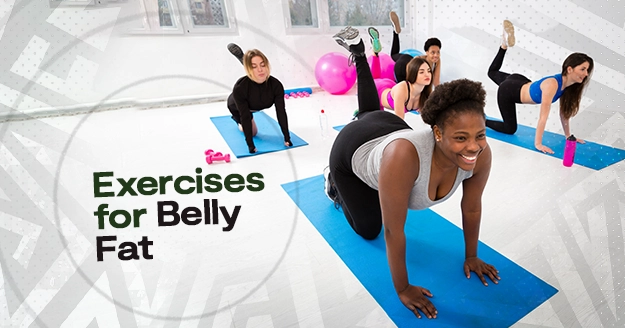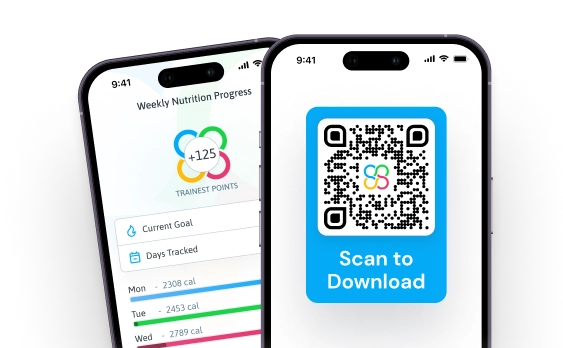What is Metabolic Syndrome?
Metabolic syndrome encompasses a collection of specific risk factors linked to cardiovascular disease. It significantly elevates the likelihood of acquiring diabetes, heart disease, stroke, or a combination of these conditions.
The National Heart, Lung, and Blood Institute (NHLBI) delineates the metabolic factors contributing to this syndrome:
- Abdominal obesity, marked by a waist circumference exceeding 35 inches for women and 40 inches for men, stands as the predominant form of obesity associated with metabolic syndrome.
- High blood pressure, indicated by readings of 130/80 mm Hg or higher, is strongly correlated with obesity and often coexists with insulin resistance.
- Impaired fasting blood glucose, measuring at or above 100 mg/dL.
- Elevated triglyceride levels surpassing 150 mg/dL.
- Low levels of HDL (good) cholesterol, falling below 40 mg/dL and 50 mg/dL for men and women respectively.
- The NHLBI and American Heart Association (AHA) advise diagnosing metabolic syndrome when an individual manifests three or more of these factors.
Most individuals grappling with metabolic syndrome exhibit insulin resistance, wherein the body’s cells struggle to respond to insulin, the hormone responsible for ushering glucose into cells for energy production. Obesity, prevalent among those with metabolic syndrome, exacerbates this resistance. If the body fails to produce adequate insulin to counteract this resistance, blood sugar levels surge, leading to type 2 diabetes. Metabolic syndrome may thus herald the onset of type 2 diabetes.
Considering the aging demographic of the United States and the age-associated likelihood of metabolic syndrome, the AHA predicts that metabolic syndrome will soon supersede cigarette smoking as the primary risk factor for cardiovascular disease. Experts attribute this shift to the escalating rates of obesity, which are closely intertwined with the increasing prevalence of metabolic syndrome.
Let’s discuss the relationship between metabolic syndrome and exercise, particularly how exercise helps with metabolic syndrome.
Metabolic Syndrome and Exercise Recommendations
What can you include in your metabolic syndrome exercise program?
- Cardiovascular Exercise: Cardio exercises for metabolic syndrome help improve heart health, reduce blood pressure, and lower blood sugar levels. Aim for 150 minutes/week of moderate-to-intense aerobic exercise or 75 minutes/week of strenuous aerobic exercise. Examples include:
- Brisk walking
- Jogging or running
- Cycling
- Swimming
- Dancing
- Aerobic classes
- Strength Training: Building muscle mass can help increase metabolism, improve insulin sensitivity, and promote weight loss. Aim to include strength training exercises for metabolic syndrome at least two days per week. Focus on all major muscle groups with exercises such as:
- Weightlifting
- Bodyweight exercises (e.g., push-ups, squats, lunges)
- Resistance training metabolic syndrome, including resistance band exercises
- Using weight machines
- High-intensity interval training (HIIT): It entails quick bursts of vigorous exercise interspersed with quick recovery periods. HIIT can be very effective for improving cardiovascular health, burning calories, and promoting weight loss. It can be tailored to various preferences and fitness levels and may include exercises like:
- Sprinting or fast-paced cycling intervals
- Jumping jacks
- Burpees
- High knees
- Mountain climbers
- Flexibility and Balance Exercises: Including flexibility and balance exercises in your fitness routine can help reduce your risk of injury, improve your mobility, and enhance overall physical function. Consider activities such as:
- Yoga
- Pilates
- Tai Chi
- Stretching exercises
- Incorporate Daily Movement: Besides structured exercise sessions, focus on increasing physical activity throughout the day. This can include walking or cycling for transportation, taking the stairs instead of the escalator or elevator, gardening, or even just standing up and moving around from time to time..
Tips for Safe and Effective Workouts:
- Don’t skip warm-up and cool-down
- Start gradually and progress slowly to avoid injury.
- Before starting any fitness regimen, especially if you have underlying medical concerns, consult with a healthcare provider.
- Listen to your body. Adjust the duration and intensity of workouts accordingly.
- Stay hydrated and fuel your body with enough nutritious foods to support your workouts.
- To make your workout regimen enjoyable and sustainable, add variation.
Diet Recommendations for Metabolic Syndrome
Changes in diet are significant in treating metabolic syndrome. The AHA states that addressing insulin resistance is essential to modifying other risk factors. Improving your diet is one way to treat insulin resistance. You can possibly achieve this by doing these recommendations:
- It’s crucial to vary your diet when it comes to your health. Incorporating a variety of foods into your diet keeps things interesting and guarantees you obtain a wide range of nutrients to support your health.
- When it comes to fats, opt for the good ones! Think about incorporating polyunsaturated and monounsaturated fats into your meals. You can find these healthy fats in delicious sources like nuts, seeds, and certain oils such as olive, safflower, and canola. Not only are they tasty; they are also beneficial for your heart health.
- Instead of reaching for white rice and bread, consider switching to whole grains like whole-wheat bread or brown rice. These grains are packed with nutrients that are stripped away in more processed versions. Plus, they’re higher in fiber, which means they’re digested more slowly, keeping you feeling fuller for longer and avoiding those sudden hunger spikes.
- Vegetables and fruits should be staples in your diet. According to dietary guidelines, aim for 2.5 cups of veggies and 2 cups of fruit per day based on a 2,000-calorie diet. Of course, adjust these amounts according to your individual calorie needs.
- When dining out, it’s easy to end up with oversized portions. Consider taking some of your meals home or sharing them with a friend to avoid overeating. You can also opt for appetizers instead of main dishes. You can also ask for smaller portions if available.
- Lastly, be sure to read food labels carefully. Pay attention to the number of calories (cals) and the serving size. Sometimes, what seems like a single serving might actually contain multiple servings, leading to unintentional overeating. Keep an eye out for added sugars, too, as they can sneak into many packaged foods. Making informed choices about what you eat can greatly affect your overall health and well-being.









